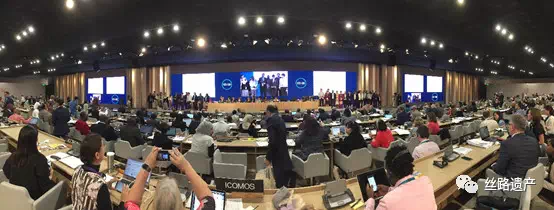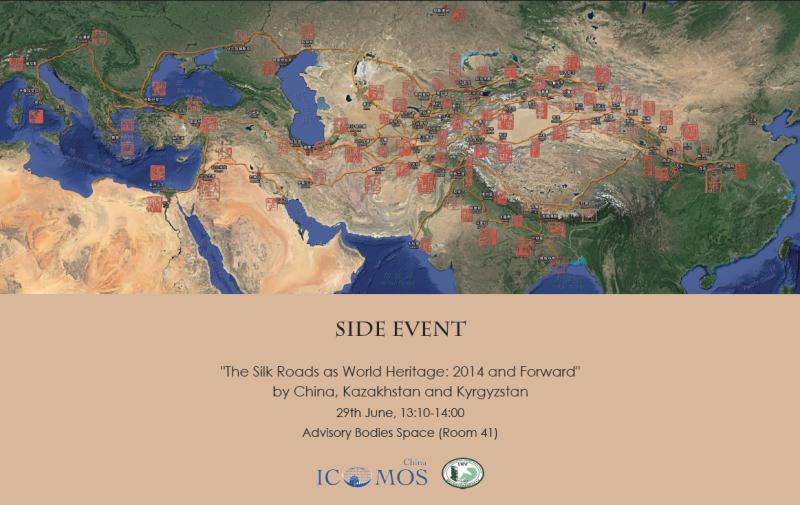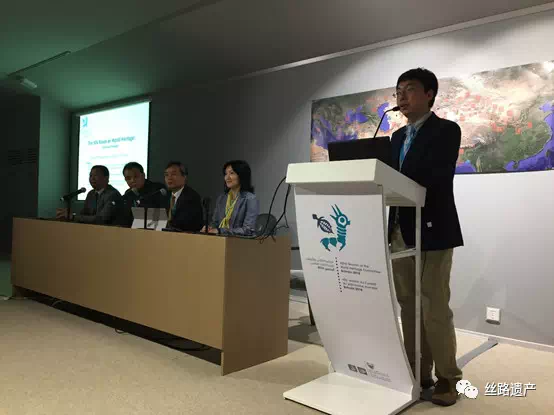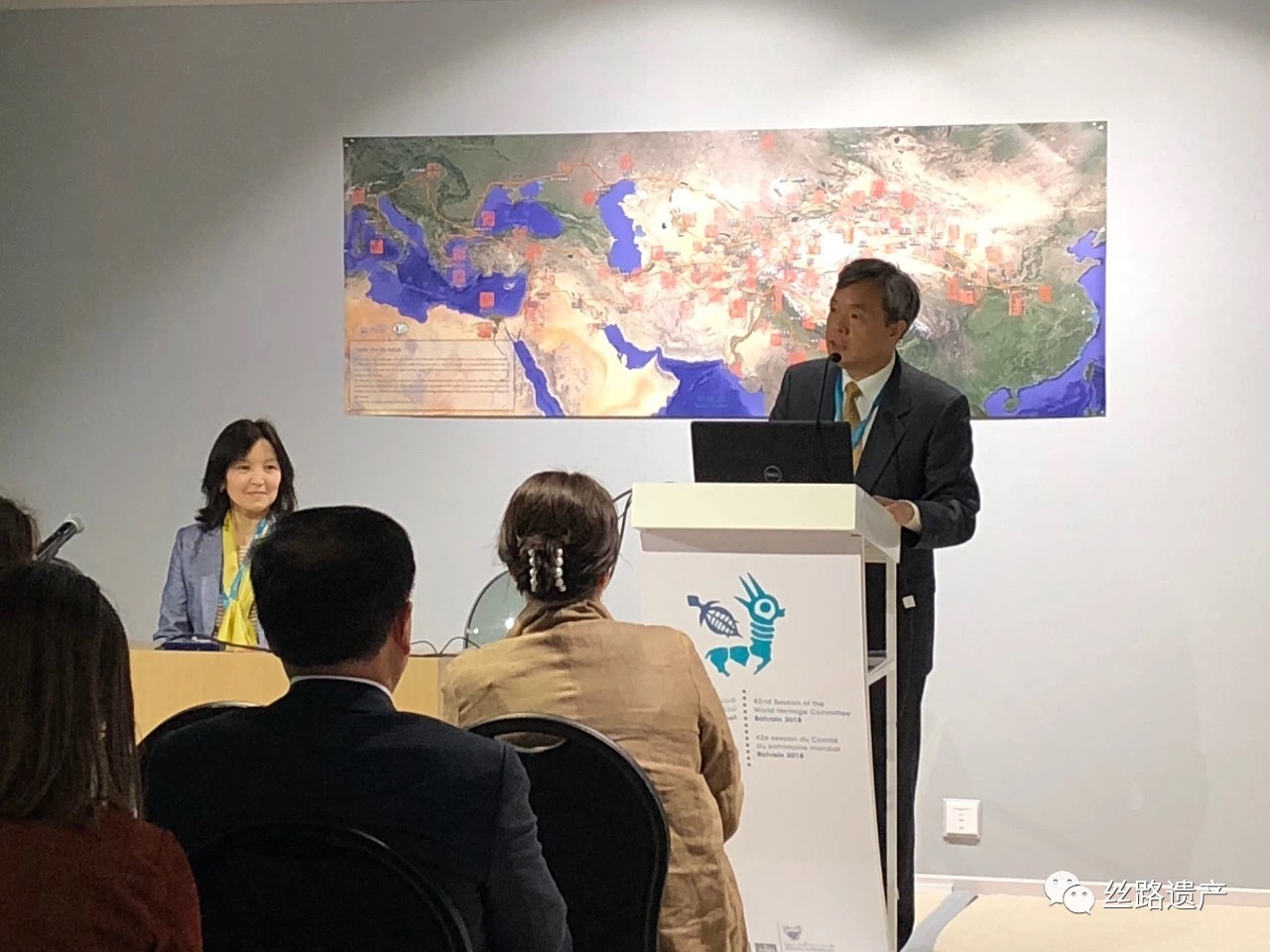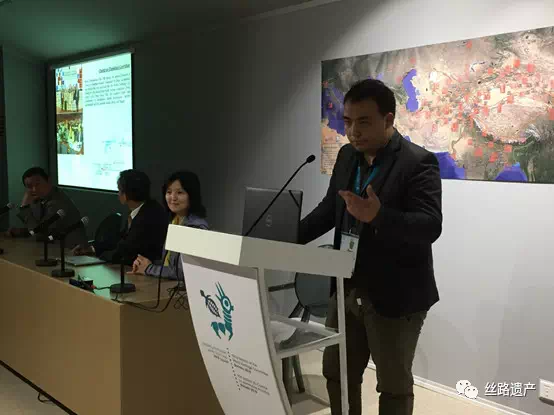Silkroads News
Side event “Silk Road as World Heritage : 2014 and forward”during 42Com
Side event “Silk Road as World Heritage : 2014 and forward”successfully held by China, Kazakhstan, Kyrgyzstan
The 42th Session of the World Heritage Committee was held in Manama, capital of Bahrain from 24 June to 4 July 2018.
During the conference, the side event “Silk Road as World Heritage : 2014 and forward”, jointly organized by IICC-X and ICOMOS China, was successfully held at noon on June 29.
The side event was chaired by Dr. Yan Haiming, Director of the Secretariat of ICOMOS China. Mr. Song Xinchao, Deputy Director of the State Administration of Cultural Heritage of China, Ms. Ainura Tentieva, Consultant of the UNESCO National Committee of Kyrgyzstan, and Mr. Madjer Massanov, Consultant of IICAS, Professor Feng Jian, Executive Deputy Director of IICC-X , and Dr. Jing Feng, Director of the Asia-Pacific Department of the UNESCO World Heritage Centre delivered speeches respectively. The meeting lasted about 1 hour.
Song Xinchao said in his speech that the Silk Road as a concept had been widely recognized by the international community and academia for more than 100 years. She was co-created and maintained by people along the route, witnessing the interaction of different races, nations or countries in the formation and development of silk roads. Silk Road was both a historical heritage and a contemporary concept, from which we could perceive, appreciate and solve the spiritual power of different nationalities, cultures and civilizations.
Song Xinchao emphasized that under the coordination of the UNESCO World Heritage Center, China, Kazakhstan, Kyrgyzstan took the lead in including the “Silk Roads: the Routes Network of Chang'an-Tianshan Corridor”on the World Heritage List, which was an epoch-making innovation model in the world cultural heritage. China will continue to strengthen cooperation with Kazakhstan and Kyrgyzstan and do a good job in the protection and management of the "Chang'an-Tianshan Corridor". At the same time, it will work with the international community to actively promote the research and application of other corridors of the Silk Roads and the Maritime Silk Road.
Ainura Tentieva showed the guests a series of archaeological, conservation and display work on heritage sites in Kyrgyzstan for four years after the successful application. She highlighted the archaeological findings of the City of Suya and Krasnorechenskoye site, the newly built information center and museums, as well as the project of road protection and display of the Balasagun ruins.
On the basis of reviewing the successful inclusion of the“Silk Roads: the Routes Network of Chang'an-Tianshan Corridor”on the World Heritage List four years ago, Madjer Massanov introduced the Syr Darya and Ural Corridor in Kazakhstan, as well as the country’s research on the protection of the Silk Road, the international exchanges and cooperation in the declaration of heritage, including the work of creating the online platform of Silk Road supported by UNESCO, and the efforts made by Kazakhstan in protecting the Talgar site.
Professor Feng Jian, the Deputy Director of IICC-X, reviewed the role of the four levels of UNESCO, ICOMOS, the member countries of the World Heritage and China, Kazakhstan, Kyrgyzstan, and introduced the four years of protection and management of the Silk Road, cross-border exchanges and cooperation, achievements in archaeological research and international training, and looked forward to the prospects for the nomination of the Syr-Darya Corridor, Pyanjikent Corridor and the South Asian Corridor of the Silk Road. Professor Feng Jian said that IICC-X, as the Secretariat and Information Center for Silk Road Cultural Heritage Nomination and Coordinating Committee, will further coordinate the archaeological, protection and research work among the three countries, and improve the Silk Roads A.I.M.S while actively promote the preparations for the Silk Road Heritage Foundation.
Finally, Dr. Jing Feng, Director of the Asia-Pacific Department of the UNESCO World Heritage Centre,delivered the concluding speech. Jing Feng said that in the past 40 years, UNESCO had launched a series of ambitious plans to strengthen research and dialogue in Central Asia. He was honored to participate in the coordination and guidance of a series of eight sub-regional and regional consultations, seminars, etc., and with the unremitting efforts of many parties, the cross-border declaration of the Silk Road was finally realized. He was also proud to be able to initiate and guide the Upstream Process in the Silk Roads nomination.
Jing Feng pointed out that the Silk Road provided the best example for the world's cultural heritages that were easily forgotten and hidden in the deep place. He highly appreciated and thanked Asian countries such as China, Kazakhstan, Kyrgyzstan, Uzbekistan, Tajikistan and Turkmenistan for their contributions in the early days of the implementation of the Silk Road project. Asian countries participating in this complex World Heritage declaration project had different political systems, administrative and legal frameworks, professional capabilities and even languages. Countries can use the Silk Road to declare World Heritage as an opportunity to continuously enhance mutual understanding, vigorously strengthen future regional and international cooperation, and promote sustainable development.
Jing Feng finally stressed that the goal of China and Central Asian countries jointly declaring World Heritage was to recognize each other, learn from each other, and embody a variety of ethical, cultural and spiritual values.
This side event attracted more than 80 audiences from various international organizations, contracting parties and heritage research institutions participating in the World Heritage Conference. There were no empty seats.Toshiyuki Kono, ICOMOS President , Peter Phillips, Secretary-General, Lu Zhou, Vice Chairman of ICOMOS China and Director of the National Heritage Center of Tsinghua University, and Ms. Hae Un Rii, Chairman of the ICOMOS South Korea, listened to the speech in a friendly and warm atmosphere.
Category: English
News
Silkroads News
Key words:

